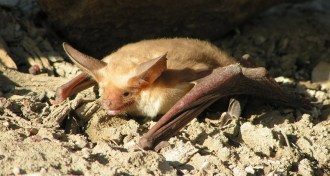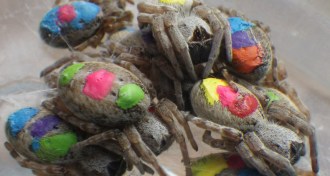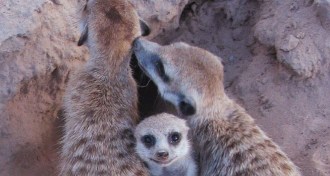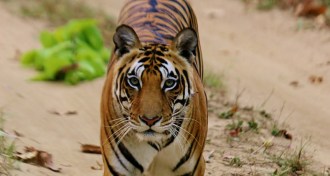Life
Sign up for our newsletter
We summarize the week's scientific breakthroughs every Thursday.
-

-
 Neuroscience
NeuroscienceThe Autistic Brain
Thinking Across the Spectrum by Temple Grandin and Richard Panek.
By Meghan Rosen -

-
 Animals
AnimalsNoise may disrupt a bat’s dinner
Mechanical cacophony can drown out the whispers of moving insect prey.
By Susan Milius -
 Neuroscience
NeuroscienceCaffeine shakes up growing mouse brains
When pregnant mice consumed caffeine, their offspring had altered neurons and faulty memory.
-
 Science & Society
Science & SocietyFlu researchers plan to repeat controversial work
The scientists who made the H5N1 strain transmissible between ferrets intend to do the same with H7N9.
-
 Animals
AnimalsClimate change may bring dramatic behavior shifts
Shifting temperatures and rainfall are expected to alter animal lifestyles from the poles to the tropics.
By Susan Milius -
 Neuroscience
NeuroscienceOne sleepless night weakens resolve in the face of doughnuts
Sleep loss changes brain activity and food preferences.
-
 Animals
AnimalsSpider’s personality matters when job hunting
Boldest individuals of social species tasked with seeking out prey.
By Meghan Rosen -
 Life
LifeEvolution of mammalian monogamy remains mysterious
Two large studies reach opposing conclusions about why males stay with females.
-
 Neuroscience
NeuroscienceCamping resets internal clock
After a week in the wild, people went to bed and got up earlier.
By Meghan Rosen -
 Life
LifeTigers meet, mix in forest corridors
In India, narrow strips of wild land connect small groups of cats.